Each league page listed below contains statistics, information and history about that league. From these pages you can access stadium and club guides for teams and grounds within that league. Click on the league tile to go direct to your league.
England / Wales
Premier League
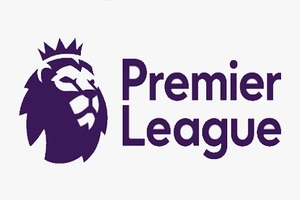
The Premier League is the highest division of professional football in England. It was formed in 1992 when the top 22 clubs in the country decided to resign from the Football League as one and set-up their own league. The decision was made, essentially, because these clubs wanted to take advantage of a lucrative new television deal.
The move made the Premier League one of the richest and most watched leagues in the world. At present it is broadcast to over 200 territories and has a potential television audience of over four billion people. In spite of being considered to be one of the most competitive leagues in the world, the Premier League has only been won by six different sides at the time of writing.
Championship
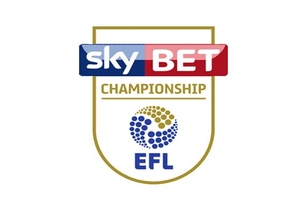
The Championship is, confusingly, the second highest division in England but the highest division in the Football League. Before the invention of the Premier League in 1992 it used to be called Division Two, with its name changing to The Football League First Division from 1992-2004. It is currently known as The Football League Championship, or the Sky Bet Championship for sponsorship reasons.
Whilst the Premier League is one of the wealthiest divisions in football, the Championship is the wealthiest league anywhere in the world that isn’t its country’s top-flight division. It is also the most watched second-tier league in European football.
- Ashton Gate
- Bet365 Stadium
- Bramall Lane
- Cardiff City Stadium
- Carrow Road
- Coventry Building Society Arena
- Deepdale
- Elland Road
- Ewood Park
- Fratton Park
- Hillsborough
- Home Park
- Kassam Stadium
- Kenilworth Road
- Liberty Stadium
- Loftus Road
- Pride Park
- Riverside Stadium
- The Den
- The Hawthorns
- The MKM Stadium
- The Stadium Of Light
- Turf Moor
- Vicarage Road
League One
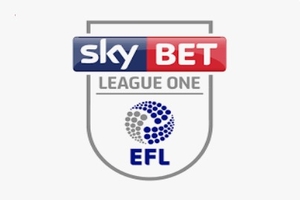
If the Championship has a confusing name then that is nothing compared to League One, or the Sky Bet League One as it’s currently known for sponsorship reasons. Pre-1992 it was known as The Football League Third Division, as it was the third highest league in England. It then became the Football League Second Division when the Premier League officially severed ties with the Football League.
In 2004 it was renamed as League One, in spite of the fact that it isn’t the number one league anywhere, being the second-tier Football League and the third highest league in total in England. It features 24 clubs who fight it out for supremacy and, potentially, promotion to the Championship or demotion to League Two.
- Abbey Stadium
- Adams Park
- Bloomfield Road
- Brick Community Stadium
- Brisbane Road
- Broadfield Stadium
- Broadhall Way
- Edgeley Park
- Field Mill One Call Stadium
- John Smiths Stadium
- Madejski Stadium
- Memorial Stadium
- New Meadow
- New York Stadium
- Oakwell Stadium
- Pirelli Stadium
- Racecourse Ground
- Sincil Bank
- Sixfields Stadium
- St Andrew’s
- St James Park
- The Valley
- Toughsheet Community Stadium
- Weston Homes London Road
League Two
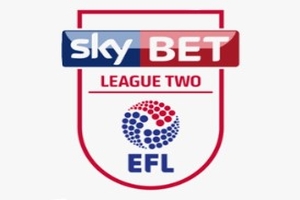
The fourth-tier division in English football is known as League Two because it lost a bet with the other leagues over which of them was the least watched. Either that or because the league above it is called League One and all of the other names were taken.
When the Premier League cut ties with the rest of the Football League in 1992 The Second Division became The Football League First Division and so on. Then in 2004 they were all re-branded once again and The Football League Third Division, which had been The Fourth Division when it was originally formed, became League Two. Hope that’s nice and clear.
- Alexandra Stadium
- Blundell Park
- Brunton Park
- Crown Ground
- Eco-Power Stadium
- EnviroVent Stadium (Wetherby Road)
- Hayes Lane
- Highbury Stadium
- Holker Street
- JobServe Community Stadium
- Mazuma Mobile Stadium
- Meadow Lane
- Peninsula Stadium (Moor Lane)
- Plough Lane
- Poundland Bescot Stadium
- Prenton Park
- Priestfield Stadium
- Rodney Parade
- SMH Group Stadium
- Stadium MK
- The County Ground
- Vale Park
- Valley Parade
- Whaddon Road
National League
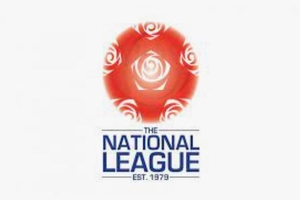
Previously known as The Football Conference, The National League is an association league that consists of three different divisions: The National League, The National League North and The National League South. At the time of writing the league is sponsored by the company Vanarama.
The National League sits below the Premier League and the three division of the Football League in the list of England’s six tiers of football. The National League North and The National League South, despite having two names and consisting of two different leagues, technically count and being the sixth tier of the English game.
- Boston Community Stadium
- Boundary Park
- Cressing Road
- Damson Park
- Gander Green Lane
- Gateshead International Stadium
- Grosvenor Vale
- Huish Park
- J Davidson Stadium
- Kingfield Stadium
- Mill Farm
- Recreation Ground
- Roots Hall
- Silverlake
- Spotland Stadium
- Stonebridge Road
- The Hive Stadium
- The Lamb Ground
- The New Lawn Stadium
- The Shay
- Victoria Park
- Victoria Road
- York Community Stadium
- York Road
National League North and South

The National League North and South are regional divisions in English football, forming the sixth tier of the English football pyramid. They are parallel divisions, divided geographically to reduce travel distances for clubs and fans, since they are at best semi professional.
Each division comprises 22 teams playing a total of 42 matches during a regular season.
Their primary objective is to earn promotion to the National League, which is the top tier of non-league football and sits just below the English Football League (EFL). At the end of the season, the champions of each division gain automatic promotion to the National League. Additionally, a playoff system involves the teams finishing in the next positions, providing another route for promotion.
The bottom teams in the National League North and South face relegation to the seventh tier of English football, which includes various regional leagues across the country.
- Aggborough Stadium
- Arbour Park
- Beveree Stadium
- Blackwell Meadows
- Bloomfields
- Bob Lucas Stadium
- Cantilever Park
- Cherrywood Road
- Clarence Park
- Court Place Farm
- Dales Lane
- Deva Stadium
- Edgar Street
- Gallagher Stadium
- Glanford Park
- Haig Avenue
- Hardenhuish Park
- Hornchurch Stadium
- Lincoln Road
- Longmead Stadium
- Mariners Park
- Meadow Park
- Meadowbank
- Melbourne Community Stadium
- New Windmill Ground
- North Street
- Park View Road
- Parkside
- Plainmoor
- Priory Lane
- Queen Elizabeth II Stadium
- Raymond McEnhill Stadium
- Rossett Park
- Scarborough Sports Village
- St James Park Brackley
- Stainton Park
- Tameside Stadium
- The Brewery Field
- The Citadel
- The Meadow
- The Silverlands
- The Walks
- Truro Sports Club
- Twerton Park
- Vauxhall Road
- Victory Park
- Woodside Road
- Woodspring Stadium
Isthmian League
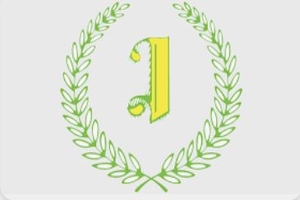
The Isthmian League is a regional football league system primarily consisting of clubs from London, South East England, and the home counties. Established in 1905, it stands as one of the oldest football leagues in the country below the Football League (now the English Football League) and the National League System. The league operates as a semi-professional setup, hosting a series of divisions with promotion and relegation between them.
Throughout its history, the Isthmian League has been recognised for nurturing talent, fostering competitive football, and acting as a bridge for clubs aspiring to progress to higher levels within the English football pyramid. Notably, many clubs that have successfully competed in the Isthmian League have gone on to achieve promotion to higher tiers of English football, such as the National League and the Football League, showcasing the league’s importance as a platform for clubs seeking to climb the ladder of professional football in England. The league has contributed significantly to the development of the sport at a grassroots level while maintaining its status as a respected and competitive regional football competition.
Northern Premier League Premier Division
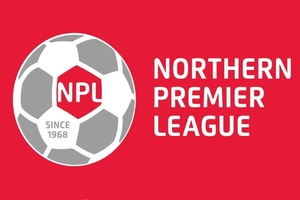
The Northern Premier League is the younger of the two Northern Football Leagues, but it is the more prestigious. The league is made up of four different divisions, with the Premier Division at the top sitting in the 7th tier of the English footballing pyramid, alongside the Southern League’s Central and South Premier divisions, and the Isthmian Premier division. Together, these divisions sit directly underneath the National Leagues North and South, which in turn feed the National League.
A lot of well established clubs in the Football League have come through the NPL, ex-Premier League side Wigan among them, so although it is a long way from professional football, the Northern Premier League Premier Division can certainly be a launch pad for clubs to progress. You will find clubs from Derbyshire all the way up to Northumberland competing here.
Southern Football League Premier Central
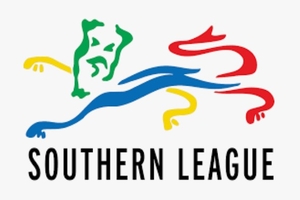
Although the Southern Football League has been in operation since way back in 1894, the Premier Central division was a much later addition, playing its first season in 2018/19. It forms one of four footballing divisions in the 7th tier of English football, feeding the National League South. However, the division is actually part of the Southern Football league which also consists of the Premier South division at the same level, and two other divisions one step down.
Given the Premier Central division’s relatively short history, there aren’t any teams that have graduated to the football league through it so far, although plenty have come through the Southern Football League as a whole. The teams playing in this division tend to be based around the middle of the country, hence the name, so think Derbyshire, Lincolnshire, Leicestershire, Cambridgeshire, and Suffolk. That said, with the rate of promotions and relegations, the league as a whole and therefore the Premier Central division need to be flexible as to what exactly counts as ‘central’ from one season to another.
Southern Football League Premier South
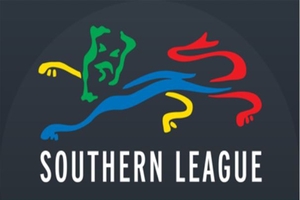
As part of the Southern Football League, which dates back to 1894, the Premier South division has some serious history behind it, but due to a number of significant restructures following the introduction of additional leagues above it, it looks very different these days. Many big teams have passed through the SFL though, including Tottenham Hotspur most famously, and the Premier South division now sits as part of the 7th tier of English Football, with a Division One South below it.
Teams playing in this league, and specifically the Premier South division, are semi-professional at most, usually based at stadiums that are fairly basic but very much permanent structures, and mostly playing teams that aren’t a million miles away. This isn’t always the case though, as the way promotion and relegation works at this level means that occasionally much longer trips are necessary.
Scotland
Scottish Premiership

The Premiership is the top-tier of Scottish football. It used to be known as the Scottish Premier League, or SPL, after the top division decided to mirror the English Premier League and break away from the rest of the Scottish Football League in 1998. Then, in 2013, it merged with the Scottish Football League to form the Scottish Professional Football League and retitled itself as the Scottish Premiership.
At the time of writing the league is known as the Ladbrokes Premiership because of sponsorship. The Scottish top-flight contains twelve teams that play each other three times before being split into a top six and bottom six mini-league. Each team then plays the other five teams from its half of the table one more time in order to decide upon the final league position? Confused? Thought so.
Scottish Championship
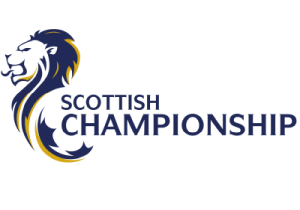
There has been a second-tier of Scottish football ever since the league turned professional in 1893. Because the Scottish Football League has been through some turmoil over the years, however, the history books will tell you that the Championship was formed in 2013. That’s because that’s when, as mentioned in the Premiership section, the SPL and SFL kissed and made up and formed the Scottish Professional Football League.
As with the Premiership, the Championship is officially known as the Ladbrokes Championship because of a sponsorship deal with the well-known bookmaker. As exciting as the season in general is North of the border, it’s when it comes to relegation and promotion that things really heat up. The top team does a straight swap with the bottom team from the Premiership, but teams 2-4 play each other for the right to go up against the second-to-bottom placed team in a fight to the death. Or at least to decide who gets to play in the Premiership the following season.
Scottish League One
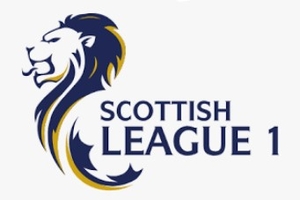
Entirely unsurprising when you consider the official names of the two leagues that are above it, League One in Scotland is known as the Ladbrokes League One because of sponsorship. A third-tier was added to the Scottish Football League system back in 1975, but the reformation of the SPL with the SFL in 2013 meant that everything needed to be rebranded and so the Scottish League One in its current form has existed since then. As with the Championship, there is a fun little play-off system at the top of the division to decide which team will have a shot at promotion between those that finished 2nd, 3rd and 4th.
It’s not just the promotion and relegation system that’s a bit messed up in Scotland. As with its English counterpart, there’s a real problem with naming things after what they actually are. In 1975 the top-flight was named the Premier Division and the second-tier was called the First Division. The third-tier, as a result, took on the moniker of the Second Division. It is in that spirit that nowadays the third-division of Scottish football is known as League One, just to make sure no one really has a clue what’s going on from one minute to the next.
Spain
La Liga
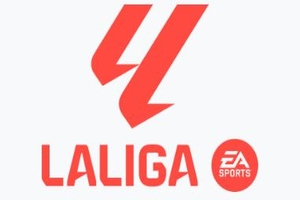
The top division of professional association football in Spain, or the Liga de Fútbol Profesional as it is in Spanish, is officially called the Primera División. It is known in English as La Liga, even though neither of those words are, you know, English. At the time of writing it is known as Liga Santander due to sponsorship.
La Liga is contested by twenty different teams from across Spain, with a total of sixty different teams having competed in it since its inception in 1929. Of those sixty teams the league has been won by nine of them, with Real Madrid holding the record number of titles.
Segunda División
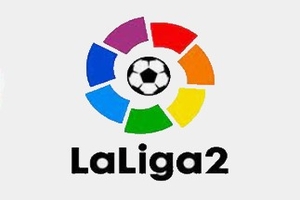
The Segunda División, commonly referred to as La Liga 2, is the second-tier professional football league in Spain, sitting directly below La Liga, the country’s top-flight division.
La Liga 2 consists of 22 teams that compete across a total of 42 matches during a regular season. The league features a mix of clubs aspiring for promotion to La Liga and those seeking to avoid relegation to the Segunda División B (third tier).
At the end of each season, the top two teams in La Liga 2 gain automatic promotion to La Liga, while the third promotion spot is contested among the teams finishing in positions three to six through a playoff system. Conversely, the bottom four teams face relegation to the Segunda División B.
Italy
Serie A

Owing to sponsorship, Serie A is currently called Serie A TIM. It is the top-flight league in Italian football and was officially founded in 1898. It changed to its current round-robin type format in 1929 and consists of 20 teams playing each other home and away for a total of 38 games each.
The top two teams in the league at the end of the season automatically qualify for the group stages of the Champions League, with the third placed team entering the competition at the qualifying phase. The bottom three teams are demoted to Serie B, with three teams being promoted from there into the top division.
Germany
Bundesliga
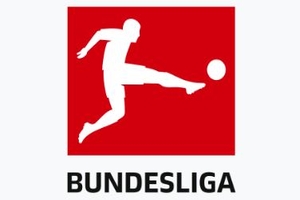
Officially called Fußball-Bundesliga or 1. Bundesliga, this is the top association football league in Germany. It is the league with the highest average stadium attendance in the entire world. Unlike in Spain, England, Italy and France, the Bundesliga is contested by eighteen teams rather than twenty.
At the time of writing a total of 53 clubs have competed in the league since its inception in 1962. The most successful club during that time is Bayern Munich, though they are obviously not the only team to have won it. Other notable title winners include Borussia Dortmund, Werder Bremen and Borussia Mönchengladbach.
2. Bundesliga
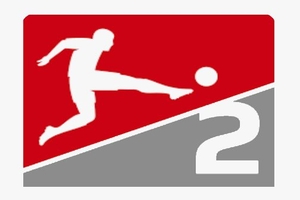
Founded 11 years after the Bundesliga itself, 2. Bundesliga is the second tier of football in Germany, beginning its first ever season in 1974. 18 teams compete in the league each year, and they also compete for the DFB-Pokal which is a bit like Germany’s version of the FA Cup.
It began as a league split in two, North and South, before becoming a single division in 1981 until 1991. They tried going back to a North South split for the 1992 season, increasing the number of teams to 24, but quickly realised this was a rubbish idea and changed things back again the following year.
As you would expect, the top teams in 2. Bundesliga are promoted to Bundesliga, and the bottom teams are relegated to 3. Liga. The exact number of teams going in either direction has changed over time, but at the moment, between 2 and 3 teams go up or down; 2 automatically, while the fate of the third from top/bottom is decided via a playoff with the corresponding team in the leagues above and below.
France
Ligue 1

Formerly known as Division 1, Ligue 1 is the top association football league in France. It is one of two leagues that make up the Ligue de Football Professionnel, the other being Ligue 2. That is the equivalent of the Football League in England.
Inaugurated in September 1932, Ligue 1 is competed by twenty different teams. At the time of writing, AS Saint-Étienne have won the most French titles in the competition’s history. Each season consists of each team playing 38 games in total, amounting to a home and away match against every other side in the league. The bottom two teams are relegated to Ligue 2, with the top two teams from there replacing them.
Ligue 2
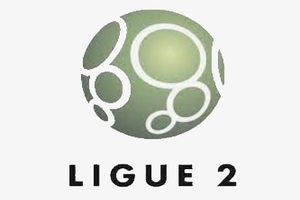
Ligue 2 is the second-highest division in the French football league system, sitting directly below Ligue 1. It comprises of 20 teams, where each team plays a total of 38 matches during a regular season.
The primary objective for clubs in Ligue 2 is to earn promotion to Ligue 1 by finishing in the top two positions at the end of the season. The third-place team participates in a playoff against the 16th-placed team in Ligue 1, with the winner earning a spot in the top-tier league for the following season.
Conversely, the bottom two teams in Ligue 2 are relegated to the Championnat National, the third division in French football.
Netherlands
Eredivisie

The Eredivisie, or Honour Division, is the top-flight football league in the Netherlands. Eighteen teams take part in the league and play each other twice; once at home and once away from home. The league was establish in 1956, making it one of the youngest professional leagues in Europe. The relegation and promotion of teams in Dutch football is unusual, with a series of knockout games played between sides depending on where they finished in each of the country’s top two divisions.
The stadiums in the Netherlands are reasonably impressive, even if they’re not all that large. Even the biggest ground in Holland can only hold just over 50,000 spectators. It is far more common for stadiums to be quite small an unimposing, even if they fit in well to the area that surrounds them. The majority of Dutch grounds feature a bowl of continuous seating in the European Style.
Portugal
Primeira Liga

The Primeira Liga is the top-flight league in the Portuguese football pyramid. It is currently known as Liga NOS owing to sponsorship. Eighteen teams fight it out to be named the champions of Portugal, though there’s not a lot of point. Since its inception the league has been won by one of three teams every year except on two occasions. Those three teams are Benfica, Sporting Lisbon and Porto.
The league is structured in a standard fashion, with each team playing the other once at home and once away. Three points are awarded for a win, one for a draw and none if you lose. The top two teams at the end of the season enter the group stages of the Champions League and the third placed team gets a chance to get there by entering the competition’s playoffs. The fourth and fifth placed Primeira Liga teams enter the Europa League.
Belgium
Belgian First Division A
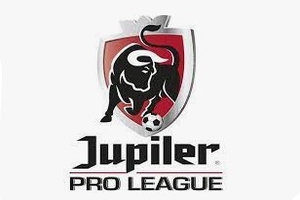
The Belgian First Division is actually split up into two separate leagues named A and B. A is, as you’d imagine, the top-flight league in the Belgium football league pyramid. There is a system of promotion and relegation in place with the First Division B, though both that and the winning of the championship itself is a complicated system that has critics even within the world of Belgian football.
The league campaign is played in the same manner as pretty much everywhere else, with each team playing all of the others home and away for a total of thirty matches each. Then their points are cut in half and the top six teams enter a playoff system against each other to decide who will be crowned the champions for that season. It’s complex and a bit odd but it works for the Belgians so who are we to complain?
Greece
Greek Superleague
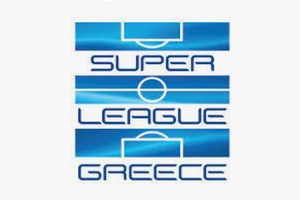
Was the first Greek league formed in 1905, 1923, 1927 or 1959? It depends on how strict you are with your interpretation of what ‘formed’ means as well as what you consider to be a ‘league’. What we do know is that there was an amateur division playing organized football between 1905 and 1912; a champions play-off between various football associations in 1923; and a definitive Greek championship being played from 1927 onwards. However, the league in the structure that we understand it today was formed in 1959. Is that all clear? Thought not.
Things seem more simplistic when you look at the structure of the Superleague itself. It features sixteen teams vying for the champion’s crown and the team with the most number of points at the end of the season, having played each other twice, wins. The complication arrives when you find out how it is decided which team will go into the Third Qualifying Round of the Champions League and which will go into the Europa League. That involves a play-off with some of the most convoluted rules we’ve ever seen. Read on to find out more.
Turkey
Turkish Super Lig
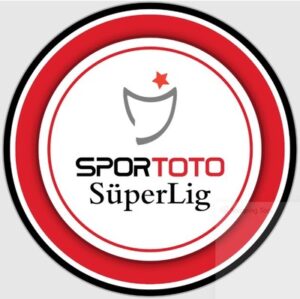
The Turkish Süper Lig is the top-flight division in Turkey’s football league system. It is one of five professional leagues in the country. Sponsorship means it’s currently known as the Spor Toto Süper Lig. Eighteen teams compete in the usual round-robin format of having one game at home and one game away gainst each of the other teams in the league for a total of thirty-four games.
The Turkish champions qualify for the group stage of the UEFA Champions League and the second placed team enters that competition’s third-round qualifying stage. The teams that finish third and fourth go into various stages of the UEFA Europa League. The bottom three teams are relegated at the end of the season and are replaced by the top two teams from 1. Lig and the winners of that league’s playoffs. It’s all very exciting.
Switzerland
Swiss Super League

The Swiss Super League is sponsored by Raiffeisen, a Swiss cooperative bank, so is also known as the Raiffeisen Super League. The small league has only ten teams but is still ranked 12th in the UEFA coefficient tables, this is testament to the performance of the top four dominant teams: Basel, Zurich, Grasshoppers and Young Boys.
Switzerland has some of the most stylish stadia in the world, many of which are set against iconic scenery and breath taking landscape. The bottom team each year are relegated to second tier Challenge League.
Russia
Russian Premier League

The top-flight league in Russia has sixteen teams competing in it and it is administered by the league itself. That changed in 2001 as prior to this the country’s top-flight, imaginatively named the Top Division, was run by the Professional Football League of Russia. It was originally formed in order to give clubs a greater amount of independence.
The league is run in a similar way to most European leagues. Each team plays each other twice, once at home and once away. Three points are awarded to the winning team, none to the losing team and one point to each team if the match ends in a draw. At the end of the season the points are added up and the top two teams enter the Champions League, with the club in first position crowned as the champions of Russia. The teams in third and fourth place both go into the Europa League and the bottom two clubs are relegated to the Russian National Football League and replaced with two teams from there.
Russian Football National League
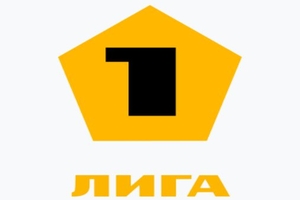
Unlike in the UK, the term ‘National League’ in Russia actually relates to the second tier in Russian Football – so it’s equivalent to our EFL Championship.
It was founded in 1992, and until 2011 was run by the Russian Professional Football League, at which point the Football National League took over.
There are 18 teams in the RFNL, with the top 2 being promoted and the 3rd and 4th entering playoffs with those in 13th and 14th position in the Premier League. Three teams are also relegated each season.
Ukraine
Ukrainian Premier League

Much like its namesakes in Russia, Portugal and England, the Ukrainian Premier League is the top-flight division of football in Ukraine. Originally formed in 1991 when Ukraine declared itself to be an independent country from the Soviet Union, it took its current name when the league format was re-jigged in 2008. Twelve teams compete in the league, with forty-eight professional football clubs in existence in the country overall.
The league season is split into two halves. In the first half of the year all teams play each other home and away, gaining three points for a win, one for a draw and none for a loss. Halfway through the year the teams are split into two mini-leagues depending on their position in the table. The top six teams go head-to-head to decide who will end up as the champion and the bottom six enter play-offs to discover who will be relegated.
Bulgaria
Bulgarian First Professional Football League

Originally formed in 1924 as a knockout tournament, the top-flight of the Bulgarian football league system has undergone numerous changes over the years. Formally known as A Group, with the second-tier called B Group, the two professional leagues in Bulgaria underwent a name change and reformation prior to the 2016-2017 league season and are now known as the First Professional Football League and the Second Professional Football League.
The Bulgarian First Professional Football League has one of the most confusing and convoluted systems in place anywhere in Europe. Similar to Ukraine, the league calendar is split into two halves. The first half is just a normal season and all teams play each other once at home and once away. After that the top six teams enter a play-off and the bottom eight teams do too. That’s when things get slightly complicated, to understate the matter somewhat.
Poland
Ekstraklasa

Formed in March of 1927 and more accurately known as the PKO BP Ekstraklasa because of sponsorship, the top flight league in Polish football sees sixteen teams go head to head to be crowned champions. The league as it is today nearly failed to get off the ground all together when the Polish Football Union refused to back it, but the clubs ignored the union and ploughed ahead anyway, giving us one of the more interesting divisions in Europe.
The Polish system isn’t quite as confusing and convoluted as other leagues, such as Bulgaria’s First Professional Football League, but it isn’t far off. After each team has played thirty games the division is split in half, with the top eight teams entering a mini league against each other and the bottom eight doing the same. Every team ends up having played 37 games in total, at which point the Polish champions are declared and two teams are relegated down to I liga.
Denmark
Danish Superliga

The Danish Superliga, known as the Superligaen in its native language, was officially formed in 1991 and replaced the Danish First Division as the top-flight league in Denmark. The stadiums used by the teams in the league are small, with the largest having a capacity of around 38,000. The Danish First Division is now the second-tier league in the country. The top three leagues are known as the Danish Tournament, with the fourth-tier known as the Denmark Series.
The structure of the Danish Superliga is arguably the most convoluted system in all of Europe. The fourteen teams play each other twice before the league is split into two groups. The top six teams compete for the championship and for European places and the bottom eight compete to avoid relegation. When you put it like that it doesn’t seem all that complicated, but it really is. There are inter-league knockout tournaments, mini-leagues and more. The only sure-thing is that at the beginning of the next season there are still fourteen teams ready to compete.
Sweden
Swedish Allsvenskan
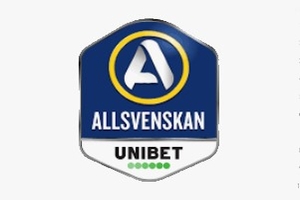
Established in 1924, the Allsvenskan is Sweden’s top league. It is the pinnacle of a footballing pyramid that contains ten divisions and operates a system of promotion and relegation throughout. Sixteen teams compete in the Swedish top-flight and the winners are not only declared to be the champions of Sweden and entered into the Champions League, they also get awarded the Gold Medal. Even more fun, the team that comes in second gets a Large Silver Medal, third gets a Small Silver Medal and Fourth is given a bronze medal. They also enter the Europa League, though the medals are probably more what they’re in it for.
The sixteen teams play each other twice over the course of the season, resulting in 240 games being played in total as they each play 30 matches. The season takes place from the end of March or beginning of April through to November. They don’t play over the winter as it’s freezing and who can be bothered? Much better to have a hot chocolate, put your feet up and watch Premier League teams play 300 games over Christmas. The bottom two teams are automatically relegated to, and replaced by teams from, the second-tier, the Superettan. The third Superettan team and the third from bottom from the Allsvenskan then fight to the death. Or have a play-off, it’s difficult to remember which.
Croatia
Prva HNL

Say what you like about English translations of things but never say they make things more exciting. In Croatian the top-flight of football is called Prva hrvatska nogometna liga, or Prva HNL. We call it the First Football League. It is the top level of the football pyramid in Croatia, with another six levels found beneath it. It operates a system of promotion and relegation to the Druga HNL, the second-tier of Croatian football.
The structure of the Prva HNL is blessedly easy to understand when compared to some of its European rivals. There are ten teams that compete in it and they play each other four times, basically in order to drag out the season and make it a bit more interesting. When they’ve played 36 games each the team with the most points (accrued by getting three for winning a game, one for drawing and none for losing) is crowned champions. There are two teams relegated at the end of the year, too.
Austria
Austrian Bundesliga
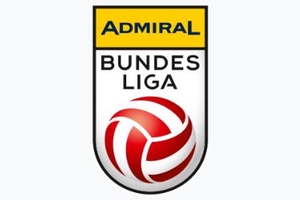
Austria’s top-fight in its current form was created in 1974, though league football was played in the country long before that. In fact, the first ever competition in Austria was a cup, but one that followed a league format. It turned professional in 1924, but it was the change to proceedings fifty years later that had a lasting effect on Austrian football.
The issue that Austrian football has had is that the association in charge of the country’s football has never quite made up its mind about the structure that it wants its league to take. Consequently the number of teams playing in the top division as well as how the format of the league works has changed countless times. At present there are twelve teams who play each other twice before splitting off into two halves, with the top six teams competing for the title and the other half hoping to avoid relegation.
Romania
Romanian Liga I
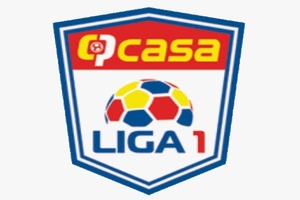
Known as Casa Liga I because of sponsorship, the top-flight of Romanian football was called Divizia A until 2006 when it was discovered that the name was trademarked by someone else. The first ever league was formed for the 1909-1910 season, yet a proper football league structure wasn’t introduced until the 1970s and even then it didn’t include the second division. That didn’t happen until 1993 when it also took on the name Professional Football League of Romania.
Like several of the smaller European states, the Romanian league system was changed in the 2010s to make it more interesting and exciting. Three points are still awarded for a win, one for a draw and none for a loss, but it is the league structure itself that is different. After playing each other twice, the top six teams enter a championship round the bottom eight go into a relegation play-off. It is needlessly convoluted but gives people something to do with their time…
Czech Republic
Czech First League

The Czech First League is currently known as the Fortuna liga because of sponsorship. It was created ahead of the 1993-1994 season in the wake of the dissolution of Czechoslovakia. That meant that the Czechoslovak League, which had previously welcomed clubs from the united country, had to be dissolved too. As a result the Czech Republic and Slovakia both formed their own national divisions for their football teams.
At the time of writing the Czech First League is a bit of a mad one, playing out a standard season for the 16 teams involved before splitting off into three different groups. The top group all plays each other once to decide the final league standings, with the team that finishes top winning the league. The middle group competes over who will play in the Europa League and the bottom set fight to avoid automatic relegation or the fear of having to enter a relegation play-off with the teams that finished 2nd and 3rd in the Czech National Football League.
Serbia
Serbian SuperLiga
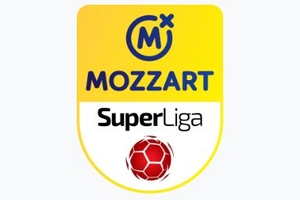
Formed in 2006, the Serbian SuperLiga can trace its history back to 1923 and the creation of the Yugoslav First League. That was made up of teams from throughout the region and remained united until Croatia and Slovenia decided to leave it to form their own divisions in 1991. Other nations chose to do the same soon after and from 1992 the league was made up entirely of sides from either Serbia or Montenegro. It was only when Montenegro declared independence from Serbia in 2006 that the country decided to form its own league.
The two biggest clubs in the country are both based in the capital city of Belgrade: Red Star Belgrade and Partizan Belgrade. It’s little surprise that they also both the two largest stadiums in terms of capacity, with Red Star’s ground having room for more than 55,000 people and Partizan’s able to welcome in excess of 32,000 supporters. They also have plenty to talk about in terms of success, with Partizan missing out on the European Cup in 1966 when the lost to Real Madrid in the final, whist Red Star went one step further and won that tournament in 1991 when they defeated Marseille in the Stadio San Nicola in Bari.
